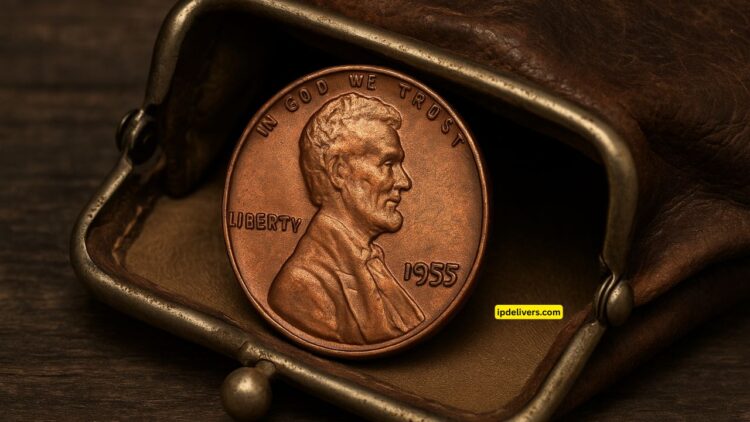A remarkable discovery has put collectors and treasure hunters on alert: a 1955 Doubled Die Lincoln Cent was recently found in an old purse, reigniting interest in one of the most iconic American coin errors.
With values ranging from a few thousand dollars to over $50,000, this find could be a life‑changing moment for its discoverer.
What Is the 1955 Doubled Die Lincoln Cent?
In 1955, a misalignment during the hubbing process at the Philadelphia Mint caused an extreme doubled die error on the obverse.
Key features include doubling on the date, “LIBERTY”, and “IN GOD WE TRUST”. Approximately 40,000 coins were struck during one night shift, with an estimated 20,000–24,000 released into circulation
Why Is It Valuable?
- Dramatic, visible doubling that can be spotted with the naked eye
- A founding piece in the doubled-die collecting craze
- Surviving high-grade examples are rare. For circulated grades, values start from $1,000–2,500, while uncirculated coins can sell for $10,000–50,000+
Recent Market Activity
Recent records illustrate the coin’s soaring appeal:
| Grade / Condition | Approx. Value (USD) | Notes |
|---|---|---|
| Worn / Circulated | $1,000 – $2,500 | Observed frequently in circulation |
| Extra Fine (EF) | $1,600+ | Quality examples in EF condition |
| Uncirculated (MS) | $2,400+ | Uncirculated examples begin at this level |
| MS65 Red | $50,000 – $114,000+ | Premium certified red specimens |
| MS66 + or PCGS MS65+ RD | $50,000 – $100,000+ | Highest-grade red coins |
| World‑record sale (MS65+) | $114,000 | Sold via Stack’s Bowers |
| Highest ever (MS65+ RD) | $288,000 | PCGS estimated valuation |
Anatomy of the 1955 Doubled Die
- Obverse Error: Crisp doubling on date, motto, and Liberty (nostril, jaw line unaffected)
- Composition & Specs: 95% copper, 5% tin & zinc; diameter 19 mm; weight ~3.11 g
- Production Figures: Mintage stemmed from Philadelphia; ~33 million standard cents produced, but misstrikes limited to one die .
Discovery in an Old Purse
Earlier this week, a reader discovered a 1955 Doubled Die Cent tucked in her grandmother’s purse. Though circulated, the coin appears extra fine, making its potential value $15,000–30,000 when professionally graded. Such unexpected finds remind us that “hidden wealth” can linger in everyday items.
Authentication & Grading
- Certification is critical. Only coins graded by reputable services (PCGS, NGC) command top prices.
- Beware of counterfeits. Experts caution about “altered” doubled dies
- Avoid die deterioration doubling, a common but low‑value look‑alike produced by worn dies
Selling & Auction Highlights
Serious collectors seek high-grade specimens. Top-tier coins end up at major auction houses:
- Stack’s Bowers: MS65+ sold for $114,000
- GreatCollections: Set record with $125,000 sale in March 2020
- Standard practice: authenticate → grade → photograph → auction or sell via dealers.
Key Facts at a Glance
| Feature | Detail |
|---|---|
| Error Type | Obverse doubled die (hub misalignment) |
| Production Year | 1955 (Philadelphia Mint) |
| Estimated Misstrikes | 20,000–24,000 coins |
| Visible On Coin | Date, LIBERTY, IN GOD WE TRUST |
| Composition | 95% copper, 3–2.5% tin & zinc; 19 mm diameter; 3.11 g weight |
| Grading Tiers & Values | Circulated: $1,000–2,500; Uncirculated MS: $2,400+; MS65 R: $50k–$114k+ |
| Record Auction Price | $125,000 (2020, GreatCollections) |
| Top Estimated PCGS Value | $288,000 for MS65+ RD |
| Authentication Warning | Be aware of fake/altered coins and die deterioration doubling |
This unexpected purse find underscores a powerful lesson: ordinary items can hold extraordinary value. A genuine 1955 Doubled Die Lincoln Cent, especially in high grade, isn’t just a coin—it’s a potential fortune.
FAQs
How do I know it’s a genuine doubled die?
Look for crisp doubling on the date and text—visible to the naked eye. Certification from PCGS/NGC confirms authenticity.
How much is my circulated coin worth?
Worn coins typically fetch $1,000–2,500. Extra-Fine examples can rise to $1,600+, while uncirculated grades start at $2,400+.
Can it really be worth $50,000+?
Yes. High‑grade Red specimens (MS65+) regularly sell for $50,000–114,000, with top-tier pieces valued up to $288,000
